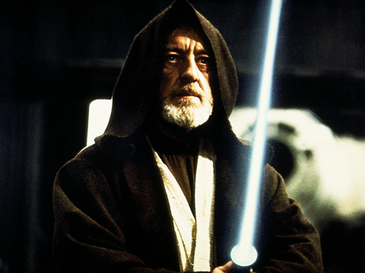One
of the things I appreciate most about comic book superheroes is that they get
reinvented time and time again. Every so
often the story gets rebooted, which keeps characters fresh and relevant, so
that someone like Iron Man is introduced in the 1970s as a Vietnam War veteran,
but then gets a new introductory story during the Persian Gulf War, and once
more in the 2008 film, which gives him yet another origin as an arms dealer in the War
on Terror. The same is true for every
other superhero. Yes, the characters
remain new, in a sense, but in comic book store conversations the question
always comes up: which version of the
story are you talking about? Which Iron
Man? The Vietnam vet, or the film
version? Each has something to say in
his time and place. But which one is the true one? Which version of the story is
the real version?

Iron Man as he appeared in his first film appearance in 2008.
What
these conversations, these debates, speak to is something that is ingrained in
our western brains; that is, the need to know the truth. The Enlightenment taught us that all things
can be proven, and if something cannot be proven, then it is not “true,” and
therefore is not to be taken seriously.
As you can imagine this inevitably led to people leaving the church in
droves because, it was declared, this stuff cannot be proven. Christianity is something of an anomaly among religions, as the most important piece of our faith
narrative—the story of Jesus Christ’s life, death, and resurrection—has not
one, not two, not three, but four versions. And those are just the ones the
powers-that-be deemed canonical—the ones that “count.” Each has a different version of Jesus, a
different take on the story. Which
version is the real one? Which one is the truth?
If
you think the point of this blog post is that I am going to tell you which version
is the “real” one, then I’ll save you the trouble and go ahead and tell
you. None of them are. And yet, all of them are. You see, we Christians are a paradoxical people. We believe that death is the gateway
to life. We believe that in order to be
filled, we must first empty ourselves.
We believe in hope when all around us is despair. Thus, when the world says that Christianity cannot work because we do not have one version of the story that is THE version, that Christianity is wrong
because our Jesus stories sometimes contradict one another, we Christians can laugh and lean
into the paradox; it is there that we find Good News.
'Jesus came down with the twelve apostles and stood on a
level place, with a great crowd of his disciples and a great multitude of
people from all Judea, Jerusalem, and the coast of Tyre and Sidon. They had
come to hear him and to be healed of their diseases; and those who were
troubled with unclean spirits were cured. And all in the crowd were trying to
touch him, for power came out from him and healed all of them.
Then he looked up at his disciples and said:
“Blessed are you who are poor,
for yours is the kingdom of God.
“Blessed are you who are hungry
now,
for you will be filled.
“Blessed are you who weep now,
for you will laugh.
“Blessed are you when people
hate you, and when they exclude you, revile you, and defame you on account of
the Son of Man. Rejoice in that day and leap for joy, for surely your reward is
great in heaven; for that is what their ancestors did to the prophets."
"But woe to you who are
rich,
for you have received your consolation.
"Woe to you who are full
now,
for you will be hungry.
"Woe to you who are
laughing now,
for you will mourn and weep.
"Woe to you when all speak
well of you, for that is what their ancestors did to the false prophets."'
--Luke 6: 17-26
As you can see from the text above, our
Gospel from this past Sunday is an excellent example of this.
Most Christians, when asked to describe the Beatitudes, will say something along the lines of: they’re part of Jesus’
Sermon on the Mount from the 5th chapter of Matthew. They include an assortment of nine blessings and
several more teachings that last 3 whole chapters. True.
But the Beatitudes are also in the 6th chapter of Luke. They are part of a teaching Jesus gives, not
on a mount, but on a plain or level ground.
Instead of nine, we get four blessings, and then four woes to go along with them,
and the differences in the versions are pretty strong.
Matthew:
blessed are the poor in spirit; Luke:
blessed are you who are poor.
Matthew: blessed are those who
hunger and thirst for righteousness; Luke:
blessed are you who are hungry now. There's a big difference there. And as a mirror to those blessings, Luke adds: woe to you are rich, for you have received
your consolation, woe to you who are full now, for you will be hungry. Unlike in Matthew, Luke’s Jesus also speaks
in a different tense—second person plural, instead of third person plural, meaning
the message is a personal teaching for those who are poor and hungry right then
and there. But which version of the Beatitudes
is the real version? Which is the true Beatitudes?
Both. And neither.
In order to understand the paradox we have to dig a little, do some
biblical scholarship. We might start by
asking why the paradox exists? Matthew
and Luke sure sound similar, but why the difference? Was Luke working off of Matthew’s version and
simply didn’t like it, seeing as how Luke was written a handful of years after Matthew? No; in fact, scholars are in agreement that Luke
didn’t even use Matthew’s version of the story.
Both used Mark, the first Gospel, which is why anytime Matthew and Luke use
a story from Mark it is almost word-for-word identical. But as for the sayings
of Jesus, like the Beatitudes, they both used a source that history has come to
call Q.
We don’t know who Q was, and we
don’t know precisely when Q was written, but what we do know is that the
writings of Q contained nothing but sayings of Jesus, no narrative just sayings. When Matthew and Luke got their hands on those sayings they adapted
them for their own communities. Matthew, writing to a Jewish audience, draws parallels between Moses and Jesus, placing the Beatitudes on the
side of a mountain (where Moses gave the 10 Commandments long before), and such an imagery would have brought comfort to the people. Luke, meanwhile, writing to
a community made mostly of Greek-speaking Gentile converts, has a more direct approach, a more
economic one, which makes this version more challenging than comforting. When we unpack these two versions of the
story we realize that both, in fact, are true, because both were speaking to
the realities of their given communities.
As Obi-Wan Kenobi once said, “What I told you was true, from a certain
point of view.”

The
task, then, for Christians in the 21st century is not to get bogged
down in what is the “truth” and what is not, which stories are more real than others.
Our faith tells us that the Truth—with a capital T—is Jesus Christ. The Scriptures, when studied and
appropriately applied to our lives—point us to Jesus, to the Truth. But the literal words of Scripture, by themselves,
are not where the truth lies. And so our
goal is not to figure out which Scriptures are more truthful than others. When
we are met with something that appears paradoxical or contradictory, we must
not ignore them outright or pretend that the contradictions aren’t there or don’t
matter, because they do. We can, however, learn from them. We must dig into them, ask what
was going on for the communities that produced them, and then in that digging
we will find the Good News for us even now.
In the case of the Beatitudes, for example, whether Matthean or Lukan, we can hear
the Good News that the ones who are blessed are those who live in dependence on
God, rather than self, that the blessed ones are those whose trust and hope and
purpose of life lie in the love and mercy of God, rather than in the power and
privilege, and possessions of this world.